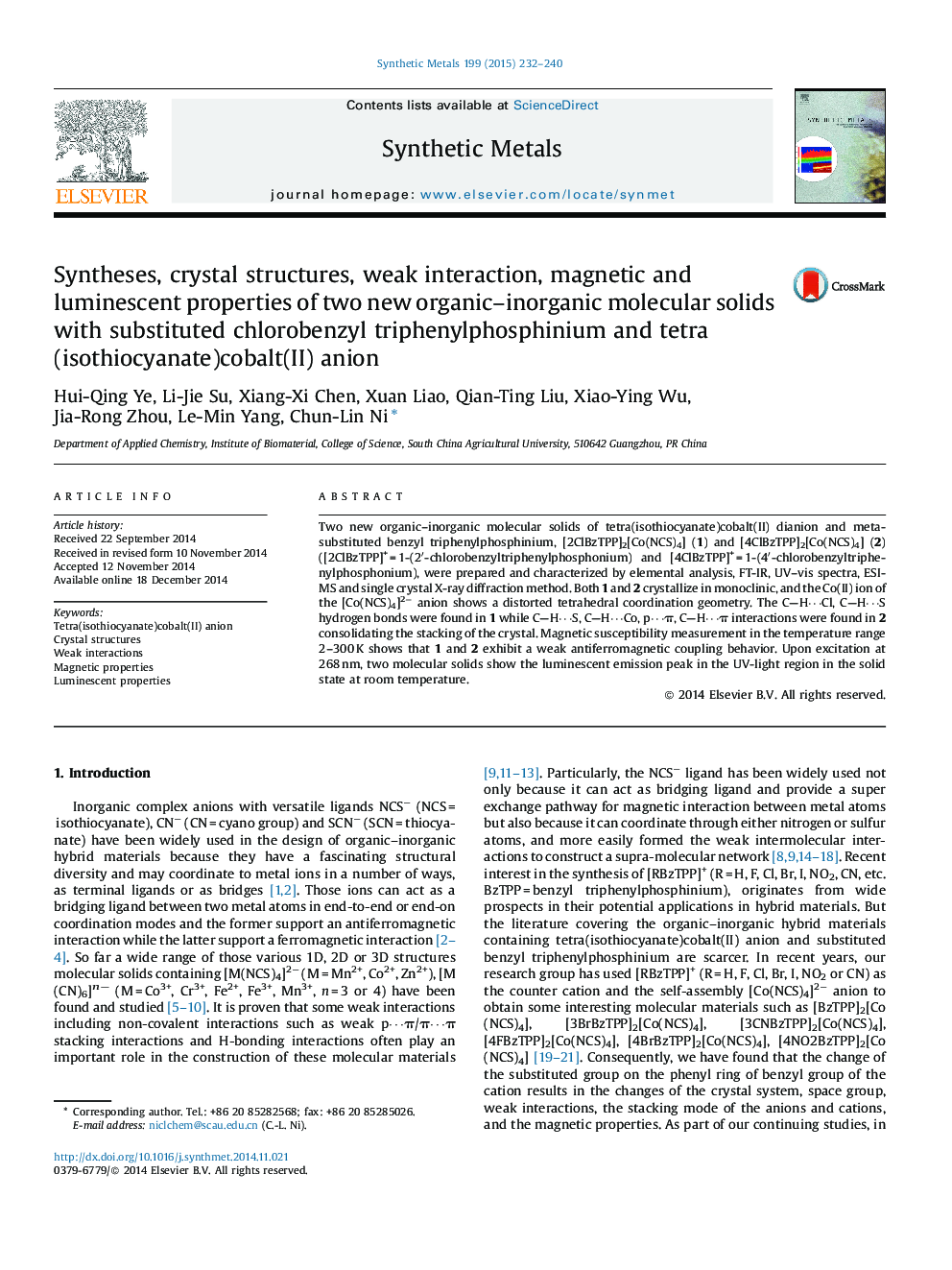| Article ID | Journal | Published Year | Pages | File Type |
|---|---|---|---|---|
| 1440796 | Synthetic Metals | 2015 | 9 Pages |
•Two molecular solids containing [Co(NCS)4]2− dianion were prepared and characterized.•There are CH⋯Cl, CH⋯S, CH⋯S, CH⋯Co, p⋯π, CH⋯π and interactions in 1 and 2.•Two molecular solids show a broad fluorescence emission at room temperature.•Two molecular solids show weak antiferromagnetic coupling behavior.
Two new organic–inorganic molecular solids of tetra(isothiocyanate)cobalt(II) dianion and meta-substituted benzyl triphenylphosphinium, [2ClBzTPP]2[Co(NCS)4] (1) and [4ClBzTPP]2[Co(NCS)4] (2) ([2ClBzTPP]+ = 1-(2′-chlorobenzyltriphenylphosphonium) and [4ClBzTPP]+ = 1-(4′-chlorobenzyltriphenylphosphonium), were prepared and characterized by elemental analysis, FT-IR, UV–vis spectra, ESI-MS and single crystal X-ray diffraction method. Both 1 and 2 crystallize in monoclinic, and the Co(II) ion of the [Co(NCS)4]2− anion shows a distorted tetrahedral coordination geometry. The CH⋯Cl, CH⋯S hydrogen bonds were found in 1 while CH⋯S, CH⋯Co, p⋯π, CH⋯π interactions were found in 2 consolidating the stacking of the crystal. Magnetic susceptibility measurement in the temperature range 2–300 K shows that 1 and 2 exhibit a weak antiferromagnetic coupling behavior. Upon excitation at 268 nm, two molecular solids show the luminescent emission peak in the UV-light region in the solid state at room temperature.
Graphical abstractFigure optionsDownload full-size imageDownload as PowerPoint slide
